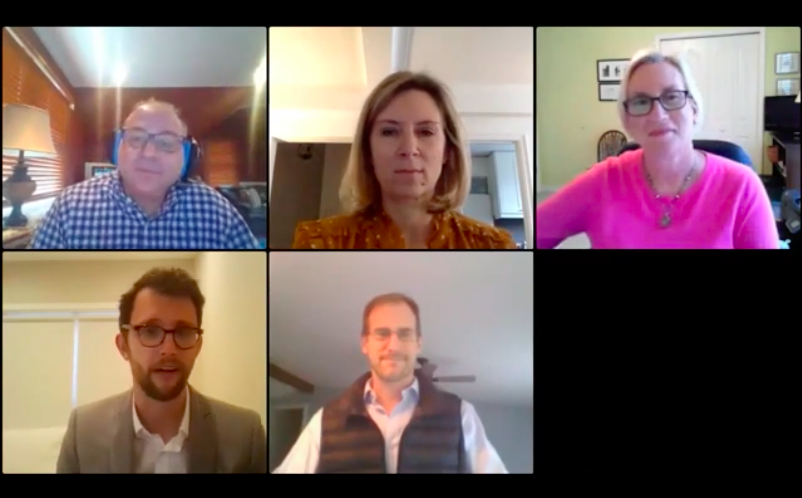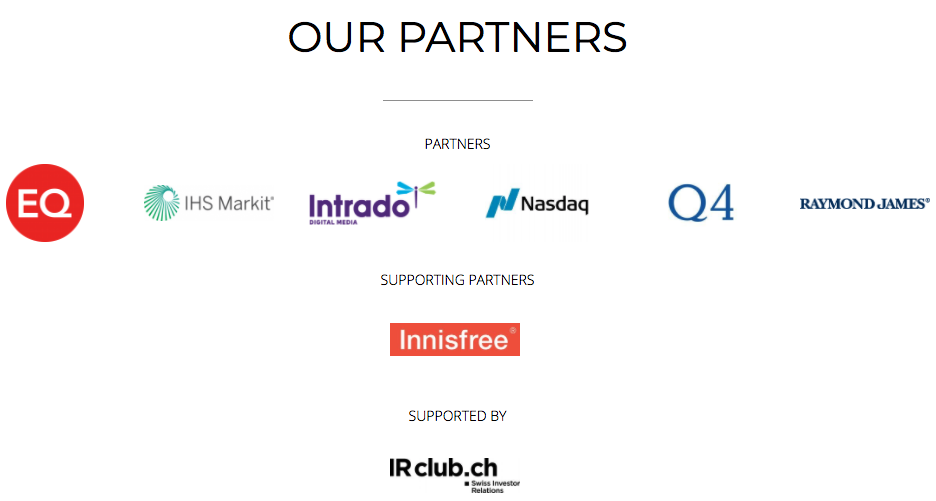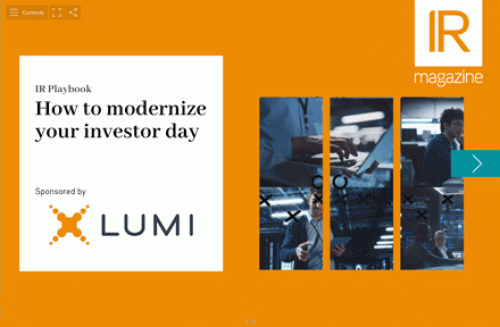While IR is always put to the test during a crisis, the Covid-19 outbreak has ramped up the challenge. The huge uncertainties caused by the virus have left corporate forecasts in tatters, and lockdown measures have forced firms to jump into virtual engagement at the deep end. Amid this disruption, panelists at IR Magazine's virtual event shared strategies for maintaining consistent communications with investors and analysts.
>> Want to watch replays of the sessions from the virtual conference? Click here
Ciena, the network equipment maker, discussed the process behind its March 5 earnings call, which took place ‘in the thrust of Covid-19,’ according to vice president of IR Gregg Lampf. ‘What we tried to do was provide as much color as we could, not just qualitatively but also quantitatively,’ he said.
Following the results day, Ciena kept its commitments to the buy side and sell side by switching to virtual engagement. Before any meetings, Lampf outlined what the company could and couldn’t talk about in relation to Covid-19. ‘I felt it was important that everybody was on the same page going into these conversations,’ he said.

(Clockwise from bottom left) Ben Ashwell, Simon Leopold, Liz Librizzi, Mary Turnbull and Gregg Lampf
For those on the sell side, the pandemic has forced whole calendars to go online until at least June. Raymond James managed to physically host its flagship conference in early March, ‘just before things were really starting to change,’ explained Mary Turnbull, managing director of corporate access at the firm.
Since then, the company has ‘had a lot of calls with management teams and typically they’ve been group calls open to everybody,’ she said. ‘We would use Zoom in order to have questions be asked. And a lot more companies than normal would actually do that.
‘In future, what we’re hearing from the buy side… is that there is now more of a desire to actually speak to management teams one on one.’
Simon Leopold, managing director of equity research at Raymond James, advised IROs to use the sell side to help get their message across in an efficient manner. ‘If we can get an assessment of the key questions that are occurring most frequently and try to answer those… we can broadcast that out to the wider audience,’ he said.
For Liz Librizzi, head of corporate access and advisory services at AllianceBernstein (AB), the demand for investor meetings is always high, but what’s changed in the last couple of months is the ‘format and forum’ of the conversations. ‘Our investors have adapted well to that environment,’ she said. ‘Given our global reach and our collaborative nature, virtual connectivity is something investors at AB have embraced for a long time, and long before Covid-19.’
Librizzi noted that, while meeting portfolio companies is ‘always paramount’, recent volatility has created some opportunities to take new positions. ‘We are always open to meeting with corporates that may have been on watch lists or that we’re not currently invested in,’ she said.
Crisis mode
Later at the virtual event, panelists focused specifically on crisis communications advice. Davia Temin, president and CEO of consultancy Temin and Company, encouraged companies to keep their broader purpose or mission in mind when navigating through a turbulent period. ‘In a crisis, what people remember is how you show up, who you are in that moment and how you are behaving,’ she said.
Given the volume of news hitting the market each day, think about ways to make your communications stand out, said Simon Ball, senior vice president of product at Intrado Digital Media. For example, he suggested releasing news slightly away from the busiest moments of the day or adding a video element.
Deb Wasser, vice president of IR at Etsy, explained how her company is fortunate to have a charismatic and media-friendly CEO – Josh Silverman – to lead communications during the Covid-19 outbreak. Indeed, his ‘rock star’ quality was one of the reasons the company decided to release a video message at the start of April, rather than make a more traditional announcement. ‘The way he comes across on video is just so much more wonderful than putting him on a business update or putting out a press release,’ Wasser said.
What the markets are saying
During the immediate response to Covid-19, when industry shutdowns were advised and shelter-in-place orders made, the markets set records for volatility levels, triggering the market-wide circuit breakers five times during March.
But much of that initial shock factor has somewhat faded away, said Jason Oury, IHS Markit’s head of global advisory for issuer solutions, as market participants all put their minds to making sense of the new normal. ‘As a market, we’ve moved from sheer panic to extreme Fomo [fear of missing out] and no one really has any idea what the world will look like in six months; every market participant is trying to guess,’ he said at the virtual conference.
Oury went on to demonstrate how that panic played out in the markets in the weeks immediately following the spread of the pandemic to mainland Europe and North America: from February to March, the MSCI World Index lost a third of its value, before clawing back 22 percent of that value as at the close of April.
A week-by-week analysis showed a few stand-out trends: hedge funds ‘bought the dip’, long funds increased their positions in core holdings while short-sellers were active in both directions. Other macroeconomic factors – such as the crash and recovery of oil prices or US presidential campaigning, to name just two – are also beginning to play out more discernibly in the markets.
Daniel Romito, assistant vice president of product development and strategy for IR intelligence at Nasdaq, had a similar view. ’The market has priced in factors like the US’ record unemployment, the election year and the oil price slump,’ he said on a later panel. ‘The underlying catalyst is that there is uncertainty, but the market has priced it in. If you look at the numbers, you’re seeing that the market has a fair amount of confidence that the pandemic has peaked and there are better days ahead.’
Oury, however, sounded a more cautious note to his virtual audience. Where market bulls may be anticipating a V-shaped recovery prompted by the roll-out of a vaccine and government stimulus for beleaguered industries, bears will be expecting a U or L-shaped one, thanks to a lack of tracing/testing and ongoing economic uncertainty. ‘There are a wide range of disagreements about where the market is heading, and large bets are being placed, so we should all probably put our seatbelts on because I don’t see this volatility ending any time soon,’ Oury explained.
One area Romito and Oury agreed on was the evidence that actively managed money may perform better than index funds and other passive vehicles in a time of uncertainty. Romito observed active funds picking up the assets shed by passive institutions, while Oury said he expected the best money managers to be able to differentiate themselves in this new normal because ‘volatility is good for active managers, as they are meant to be better at navigating it than passive funds.’
When it comes to how companies can respond, both Oury and Romito honed in on capital expenditure as a key battleground and something that has come under a deal of scrutiny from investors. Many companies – up to 40 percent of North American firms, according to a study Oury cited – are cutting, postponing or pushing back dividends, which many investment managers are comfortable with in the short term. Share buybacks have also become something of a toxic practice in recent months, and the subject of political and public backlash.
‘You’ll need to consider the perception of any capital allocation changes,’ Oury advised. ‘The crisis toolkit may not allow you to pull on either of these levers, depending on who you talk to.’
Otherwise, IROs should focus on refreshing their investor outreach and keeping their earnings and disclosure as transparent as the current situation allows for, he added, while ‘thinking outside the box’ because evaluating tech solutions could have a positive impact at a time when the markets are still churning with uncertainty.
Investor relations with the board and senior management
During the virtual conference, Colleen Johnston, former chief financial officer at TD Bank and current board director at Shopify, McCain Foods, WestJet and Unity Health, talked about her experience of running the finance function of a large bank during the global financial crisis, and how integral investor relations was to her response.
‘Ed Clarke – our CEO at the time – and I made a decision to double down on IR during the crisis,’ Johnston said. ‘That was pretty unusual at the time, frankly. Most companies didn’t know what the heck was going on and it’s really hard to sit in front of investors and analysts and say you don’t know where the world is going.’
Despite the strained circumstances around the financial crisis, Johnston said it’s important to put yourself in the shoes of your key audience: investors and analysts. ‘I always think the rule of good IR is to put yourself in the other guy’s shoes,’ she said. ‘These portfolio managers have their clients on their back… so my best advice is to reach out and spend that time with them, even if you don’t know the answers. Talk about your management philosophy, what it feels like in your organization – and be authentic. Nobody has a crystal ball.’
The global financial crisis occurred about four years into Johnston’s tenure as CFO, she said, and ‘it was a turning point… It was really the time when I would say my reputation took off in investor relations.’
As a board director at this stage in her career, Johnston also provided an update on what her expectations are of management during the crisis. ‘There’s a greater frequency of communications and board meetings to update us,’ she said. During the immediate outbreak of the pandemic, Johnston said the meetings focused on employee safety and productivity, as well as crisis business planning.
As time has gone on, however, she said it’s been important to develop scenario analyses. ‘The best one I’ve seen basically has a definition of three phases: there’s the storm, the initial recovery and the full recovery, and what actions need to be taken on the people, product, client and community sides,’ she explained. ‘Then you go through your modelling – with a focus on the P&L, cash, capital, liquidity and dividends. You end up with a base case, a bull case and a bear case… [and] once you have that you don’t need an update every five minutes. You just need to be told where you are relative to the base case, and it’s management’s job to tell you that.’
Johnston finished with a rallying cry for the audience. Noting that IR teams can gather useful information from investors and analysts during discussions, she said ‘this is a time when IR can really punch above its weight in terms of helping the organization with fresh ideas and insights from investors. I say to all of you in IR: this is your time to shine.’
This article appeared in the Summer 2020 issue of IR Magazine













